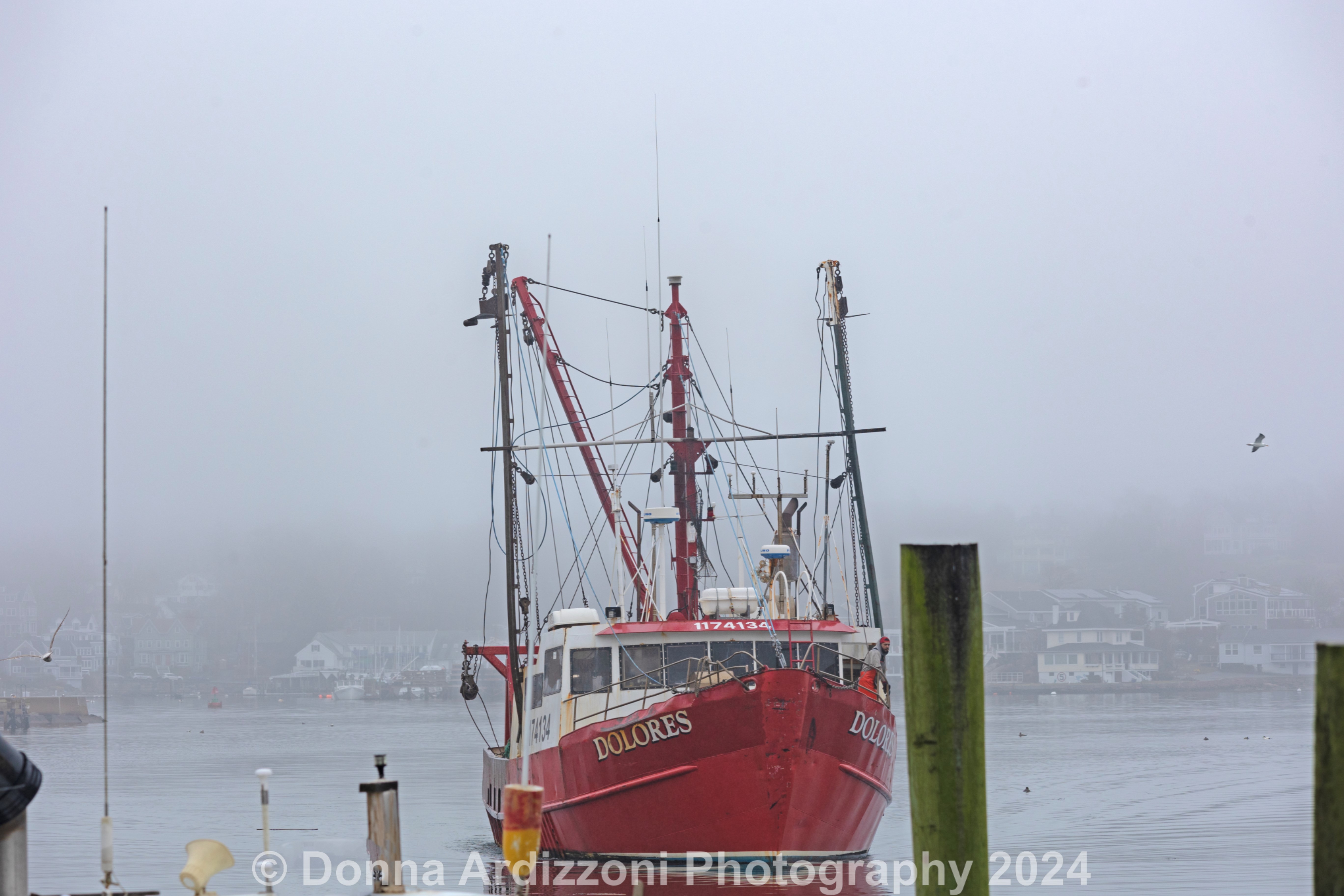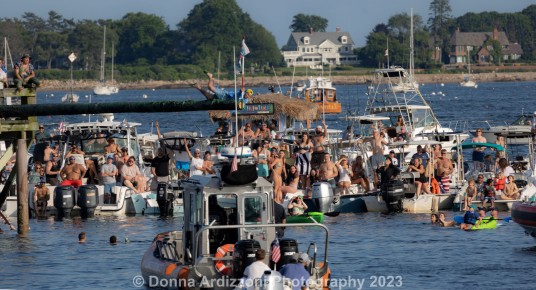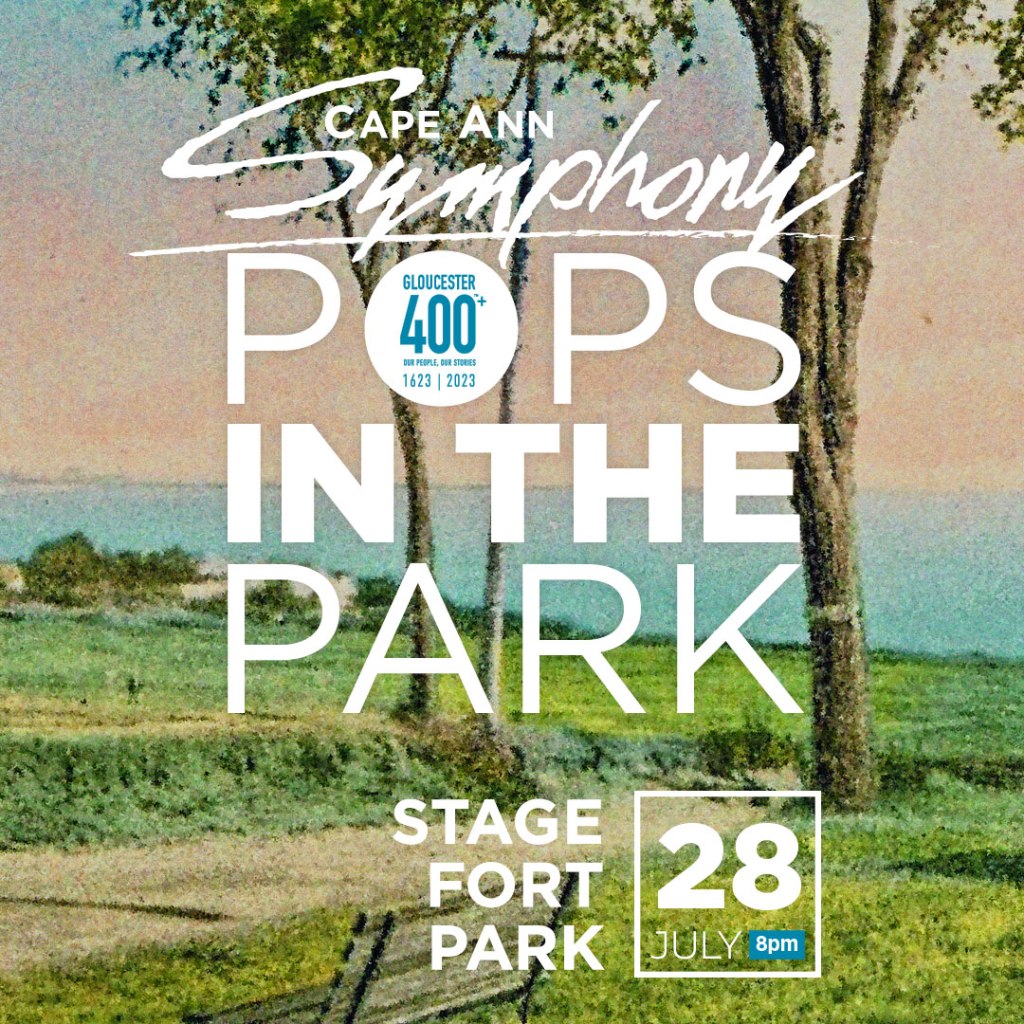https://www.deme-group.com/technologies/sea-challenger
Fron the City of Gloucester: A large vessel, Sea Challenger, will be stopping over briefly in Gloucester Harbor for a crew change before departing for its final destination.

My View of Life on the Dock
https://www.deme-group.com/technologies/sea-challenger
Fron the City of Gloucester: A large vessel, Sea Challenger, will be stopping over briefly in Gloucester Harbor for a crew change before departing for its final destination.





“Dog Bar Breakwater A Terror: Captain of the Carrie L. Hix Mistook Gas Buoy for a Light on Shore—Craft Goes to Pieces,” Boston Globe Jan 2, 1900. Image by noted maritime & naval illustrator C. McKnight-Smith


GLOUCESTER, Jan 1— The schooner Carrie L. Hix, which went ashore on the uncompleted Dog Bar breakwater between 12 and 1 Sunday morning, went to pieces this afternoon.
Capt Hatch stated that he mistook the gas buoy which the government has placed on this work for a light on shore, the buoy being obscured by the vapor which was arising from the water, it being about 10° above zero.
At the time the Hix was carrying a single reefed maninsail, whole forsail and two jibs. The Hix struck on the outer part of the ledge near a mound of rocks and immediately surged on the ledge sideways, where she rocked and rolled all of yesterday and today. The seas came in rough today, the wind being from the southeast in the morning, hauling around to northwest in the afternoon. A huge wave would break over the breakwater in masses of angry foam. The seas broke cleanly over the vessel, dealing the craft terrific blows beneath, while the schooner reeled. She succumbed visibly at every onslaught, evidently breaking from the keel upwards. The masts loosened from their steppings and swayed from left to right held only by the standing rigging and the deck boom.
About 3 vessels, having been thoroughly disintegrated, lurched and reeled and settled out of sight.
She was valued at $2000 and was uninsured. Her cargo of lime, which was valued at $1000, is covered by insurance.
A.F. Crockett, her owner, is here, and had made a contract with T.E. Reed of the lighter Eagle to get the vessel off. The storm that arose, however, brought these plans to naught.
It was ascertained today that the three-masted schooner Adelia T. Carleton of Rockport, Me., bound from Rockland, Me., to New York with a cargo of lime, narrowly escaped a similar fate. The Carleton went ashore on this breakwater Sunday at midnight, about an hour before the Hix, while making port. By hauling the spanker to windward the Carleton was gotten off the rocks, the wind backing her off after being held up about 10 minutes. She finally got inside and anchored. It was aboard this schooner that the crew of the Hix escaped in their boat. This afternoon she was towed up the inner harbor as the storm came on.
The Dog Bar breakwater, which the government has now in course of construction, is a menace to navigation in its present condition, as is proven by the large number of vessels that have been wrecked upon it while making a harbor. During the five or six years in which it has been under construction some 25 vessels have been grounded or wrecked upon it.
Dog bar is a submerged ledge which makes off from Eastern point light at the entrance of Gloucester harbor about a half mile. Nature provided here an admirable foundation to complete one of the most secure harbors on the Atlantic coast. The project of a breakwater had been mooted for many years and an initial appropriation for the work was finally secured. About $80,000 has been expended in this work, an it is estimated that several hundred thousand more will be required for its completion.
The general scheme of the construction has been to deposit loads of “grout” of rough and jagged refuse of large size from the Rockport quarries, the plan being to construct substructure or submerged portion first, and then finish with the superstructure or the part above the water.
From the inception of the work it has proved a menace to navigation. Gloucester, with its fleet of 450 vessels, which are constantly going and coming to port at all times, together with the large numbers of coastwise vessels that seek shelter here, is one of the most frequented ports on the North Atlantic coast. Protests against its dangerous character and urgent appeals that its completion be hurried have been filed at Washington in past years, but have had no effect in hastening the completion of the work. The only response of the government has been to station a gas buoy at its entrance.
That the breakwater is now in a more dangerous condition than ever is demonstrated by the fact that five vessels within four weeks have been piled up on its jagged rocks. That more wrecks may be expected is evident from the history of the past. All that can be seen of the breakwater is the ridge of irregular shaped rocks that have been dumped upon it, and this shows only at low tide, for at flood tide it is completely submerged.
What is demanded for the safety of all mariners is that the work be pushed to a completion by the government. It is estimated that the work can be completed within two years, provided an energetic policy is pursued in its construction.
The government does not even maintain a telephone at Eastern point lighthouse. oftentimes when a vessel in distress is sighted the lighthouse keeper is obliged to make his way nearly three miles to summon aid, which could be at hand almost immediately were a telephone installed there.
The Hix is the fifth coaster that has gone ashore on the breakwater within about a month. The Mentora struck there Nov. 28 and floated without assistance, leaking badly; the Annie Blanche struck there Dec. 11 and was hauled off by tugs, seriously damaged, and the Twilight struck there Dec. 27, getting off without serious injury.
A petition is being circulated by E.K. Burnham asking that the government complete the breakwater’s construction as soon as possible. It is being generally signed.
“Dog Bar Breakwater A Terror: Captain of the Carrie L. Hix Mistook Gas Buoy for a Light on Shore—Craft Goes to Pieces,” Boston Globe Jan 2, 1900.
Image by noted maritime & naval illustrator C. McKnight-Smith
Noise complaints plagued another Eastern point Gloucester buoy (‘Mother Ann’s Cow’, aka the groaner), ahead of its 1880s installation and after it was moved a mile further. Many decades later another navigational concern at loggerheads made the news in a separate Gloucester neighborhood. In a 1974 Boston Globe article, Bill Cahill wrote about Gloucester fishermen advocating for policy to protect the foghorn at Annisquam light. Budget cuts that would silence it for good might appease those summer tourists bellowing for an uninterrupted night’s sleep, but “to hell with the tourists. They don’t go fishing,” said Capt. Trupiano. “We need that horn when we’re coming in, especially when our radar breaks down.” Pointedly, the last sentence of this piece delivered a political snafu: “The foghorn has been silenced off and on nights since 1931 when US Rep A Piatt Andrew had it shut off at dusk, fog or not, to allow summer residents peaceful nights.”
It may have been gray day on Wednesday but the reflection at Gloucester Harbor was peaceful.



On Friday the sunset colors were beautiful, but it did not last long.



Walking Stacy Boulevard on a Tuesday afternoon. The harbor was very calm with pretty cloud reflections.




These paddleboarders were enjoying the view in Gloucester Harbor



The weather was beautiful and as always, the Greasy Pole and the atmosphere was fun.





One month away- mark your calendars! Countdown to Cape Ann Symphony’s very own Pops concert–a preeminent 400+ celebration– at Stage Fort Park is July 28, 2023. Classical and popular music for all in a spectacular setting!
For Gloucester’s Tablet Rock dedication in 1907, momentous Gloucester Day celebrations, and the city’s 300th, the natural open air ampitheatre of Stage Fort Park and its sweeping vistas beckoned and accomodated thousands for sheer casual delight, open and accessible to all. The Cape Ann Symphony Pops in the Park event echoes this history! On a smaller scale, the city hosts the popular free Antonio Gentile Bandstand Summer Concert Series at Stage Fort Park.






Heidi Dallin shares the details from Cape Ann Symphony:
Celebrate Gloucester’s 400+ at
POPS IN THE PARK
FREE ORCHESTRA CONCERT SET FOR JULY 28 at 8 PM
Cape Ann Symphony has partnered with the Gloucester 400+ to bring Cape Ann’s 70-member professional orchestra to Stage Fort Park for Pops in The Park, a special concert to celebrate Gloucester’s 400+, on Friday, July 28 at 8 PM.
“Over the last 6 months we’ve been raising the funds needed to put the symphony on stage and I am delighted to share that we just reached our goal. We are so appreciative of our corporate sponsors and all the individual donors who contributed to make this marquee event of the 400th celebration a reality! So, save the date of July 28th on your calendar and come join us at Pops in the Park, a glorious evening of symphonic music free to the public.”
Jodi Nedrow-Counihan, CAS board member and coordinator of the Pops event
Set against the majestic backdrop of Gloucester Harbor, this FREE outdoor all ages event will be a special evening of music. The program includes Rossini’s Barber of Seville Overture; Anderson’s Selections from Irish Suite; Copland’s Hoedown; William’s Adventures on Earth; A Tribute to Henry Mancini; Tchaikovsky’s Finale of The 1812 Overture and the world premiere of Celebration Overture by acclaimed Gloucester composer Robert J Bradshaw.
“The Pops in the Park Concert on July 28th is a celebration not only of the 400+ years of Gloucester history but of the 70+ years of the Cape Ann Symphony” adds Nedrow-Counihan. The Cape Ann Symphony began in 1952 as a volunteer group of thirty or so individuals calling themselves the “Gloucester Civic Symphony Orchestra”. On July 10th, 1952 the symphony performed their inaugural concert in the Gloucester High School auditorium and wowed the audience of over 800 concertgoers with their performance of Beethoven’s First Symphony.
Today, the Cape Ann Symphony has evolved into an all-professional orchestra of more than 70 members from throughout the New England area with a performance level to rival any regional Symphony in the country. For more than 20 years Maestro Yoichi Udagawa has been the CAS Music Director and Conductor and his artistry and passion have made him an audience favorite. Maestro Udagawa is at home in popular and contemporary music as well as the standard symphonic repertoire. He is known for his relaxed manner and ability to speak from the podium which has helped new audiences as well as enthusiasts gain a greater appreciation for symphonic music.
The Cape Ann Symphony’s Pops in the Park Concert, a preeminent event to celebrate Gloucester’s 400+, is Friday, July 28, 2023 at 8:00 pm in Stage Fort Park, 24 Hough Avenue, Gloucester, MA. Admission to this outdoor concert on the harbor is FREE. For information, call 978-281-0543 or visit pops.capeannsymphony.org
*“In 1623, 14 English fishermen set up the first European colony on Cape Ann here in what was then Fisherman’s Field and is now Stage Fort Park. These ramparts overlook the harbor, first built during the Revolutionary War, renewed for the War of 1812, the Civil War and the Spanish American War.”
Alas, those first settlers, sent across the ocean by the Dorchester Company, were unable to live off the sea and these rock-bound fields. They moved a few miles south to what is now Salem in 1626. Then, within a decade, there were enough permanent settlers on Cape Ann to incorporate the town of Gloucester. The first meetinghouse was built on the Town Green in 1642 near what is now the Grant Circle rotary of Route 128. The City set this land aside as a public park in 1898 and its Tablet Rock was dedicated by Henry Cabot Lodge in 1907.“
– David Rhinelander see Gloucester HarborWalk Stage Fort Park marker #42, 2011 photo on marker ©Sharon Lowe.
Reposting history I wrote about Stage Fort Plaque / Tablet Rock:
See also Stage Fort Park then/now photos in prior GMG post
James R. Pringle was designated to write the inscription for the bronze plaque. The execution of the design was by Eric Pape. “The nautical scheme of decorative framework and embellishment was the composite suggestion” of various committees dating as far back as the 1880s. Bronze tribute plaques embedded in Tablet Rock at Stage Fort Park detail the site’s history and were commissioned and unveiled at different times. The monumental and stunning Founders plaque from 1907 on Tablet Rock itself is in fantastic condition. Two DAR plaques were inlaid on the glacial outcroppings past half moon beach on the way to the cannons. The Fisherman’s Field (1934) which I attributed to Harriet Hyatt is so worn it’s nearly indecipherable, though that’s part of its charm**. The plaque compels close inspection, lingering and discovery. It’s a fun family activity for anyone who likes a challenge. For those who want help reading the content, I transcribed it back in 2010. Harriet Hyatt designed the Meeting House Plain plaque across from Cape Ann near Washington and Poplar. – 2015, 2027 **Update 2020: Cape Ann Museum acquired the original drawing for the plaque design in 2020!
Click here to enlarge: transcription of Fisherman’s Field tribute plaque Tablet Rock Stage Fort Park Gloucester MA




